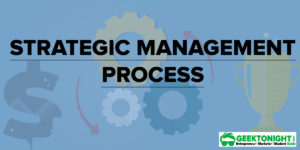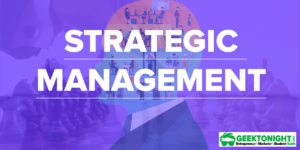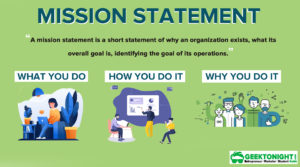In the matrix structure, project managers are assigned to a variety of projects — rather than a single one — whose activities cut across traditional departments. Matrix structure is simply an extension of the project management concept. The matrix breaks the unity of command concept. The classical principle ‘one man one boss’ is violated. The normal vertical hierarchy is ‘overplayed’ by a form of lateral influence.
The matrix legitimates lateral chains of influence. At any given time, several project managers direct the activities of several projects, while the functional heads allocate their resources to meet the requirements of these various projects. Project managers have authority over project employees relative to the projects’ goals. Decisions such as promotion, salary increases, and employee performance appraisal typically remain a part of the functional manager’s responsibility.
Key Matrix Roles
Top leadership
The top leader holds the balance of power. He must be willing to delegate decisions. He must emphasize direct contact and group problem-solving at lower levels to promote effective communication throughout the organization. He must also see that the power balance is maintained properly.
Matrix bosses
Matrix bosses have authority over project employees relative to projects’ goals. They share subordinates in common with other bosses. They do not have full control over subordinates. The functional head’s responsibilities pertain to functional rules and standards. The project manager acts as an integrator.
He is required to achieve the specific project by balancing time, cost, and performance. Matrix bosses must also be willing to face one another on disagreements. Managing highly competent professional employees demands a great deal of time, patience, and skill from project heads.
Two-boss managers/matrix subordinates
Matrix subordinates are often confronted with an agonizing choice. He must confront senior managers on conflicting demands and reach joint decisions with them. Just like a child adjusting to conflicting demands from two parents, he is expected to move along with both managers smoothly.
In such dual assignments, as indicated by Friedlander there is commonly a lack of jurisdictional clarity. The dual reporting relationship and assignments can cause role ambiguity, concerns for career development, and weakening of ties with professional reference groups for employees.
Strengths of Matrix Structure
Many people have sung the praises of matrix organization forms, from time to time. Matrix form attempts to achieve the benefits of both the functional organization and the product organization:
Efficiency
A matrix form permits efficient utilization of resources, especially manpower. Resources can be freely allocated across different products. It facilitates the efficient allocation of specialists. Specialized knowledge is available to all products/projects on an equal basis.
Further, knowledge and experience can be transferred from one project to another. Each project can share the specialized resource with other units, rather than duplicating it to provide independent coverage for each. ‘If a project demands half an astrophysicist, it does not need to support a whole one-half occupied.’ It allows the pooling and sharing of specialized resources across products in a natural, routine way.
Flexibility
Matrix forms encourage constant interaction among the project unit and functional department members. Direct and frequent contact between different specialties in the matrix can make for better communication and more flexibility. Information permeates the organization and reaches those people who need to take account of it. Quick decisions can be taken and the organization can encounter the changing and uncertain environment in a better way.
Technical excellence
Matrix structures ensure the maintenance of high technical standards. They facilitate high-quality and innovative solutions to technical problems. Frequent interactions among project unit and functional department members encourage cross-fertilization of ideas. Each specialist is forced to listen, understand and respond to the views of the other.
Balance
The matrix structure is a way of balancing customers’ need for project completion and cost control with the organization’s need for economic cooperation and the development of technical capability for the future. ‘A better balance between time, cost and performance can be obtained through the built-in checks and balances and the continuous negotiations carried on between the project and functional organizations.’
Further, the matrix reduces bureau pathologies. The dual lines of authority reduce the tendencies of departmental managers to become so busy protecting their little worlds that goals become displaced.
Freeing top management
Matrix structure permits decision-making at lower levels. Since many decisions are made at lower levels, the top management has more time to interact with the environment. The top management need not bury itself in an endless daily routine; it can concentrate more on long-range planning. Matrix structure facilitates a rapid managerial response to changing market and technical requirements.
Motivation
Traditional organization structures are based on the assumption that position level equals contribution and contribution equals rewards. In other words, the higher the individual in the organization, the more authority he has, the greater the knowledge he possesses; the more he contributes, and the more he should be rewarded.
In many organizations, this holds good even today. A 60-year-old full-time professor receives a fat salary of 50,000 per month for teaching Organisation Theory to post-graduate students while a 25-year-old lecturer receives only 15,000 p.m. for teaching another section of the same course at the university.
The reward structure will be more frustrating in case we assume that the young scholar had just published two brilliant research papers while the older one had produced nothing in years. Fortunately, in matrix structures, more emphasis is placed on the authority of knowledge than the position of an individual in the organizational hierarchy.
Membership of the team is based on special knowledge of given aspects of the work. As a result, lower-level people can have a greater say in important decisions. The opportunity to participate in important decisions fosters higher levels of motivation and commitment.
Development
A matrix structure helps employees to develop and grow. It enlarges their experience and broadens their outlook. It exposes them to a wider arena full of challenges. The process of job rotation helps them to learn something about other specialties; auditors will learn about marketing, engineers develop knowledge of financial matters and accountants learn about quality control.
A matrix structure gives persons of high potential an excellent means of demonstrating their capabilities and making a name for themselves (employees can acquire either functional or general management skills depending on their interests). It provides a stimulating atmosphere more in line with the democratic norms preferred by scientific and professional employees.
Weaknesses of Matrix Structure
A matrix structure is far from being a cure-all for the embarrassments, expenses and delays that plague even the best-managed organisations. They are seen as ‘hurried improvisations’ rather than as ‘thought-through transformations’. In fact, matrix organisations carry two diametrically opposed sets of costs and benefits.
Power struggles
Matrix fosters power struggles between product and functional managers. Unfortunately, both functional and product managers share the same set of resources leading to unhealthy competition. Each manager tries to safeguard his undisputed control over a given sphere of operations by building protective walls.
For example, functional managers form coalitions to undermine the power of project specialists. Matrix intensifies defensive behavior and hostile attitudes between managers. It is a sure recipe for personal conflict.
Stress
Matrix organizations can be stressful places to work in. As pointed out by R.L. Kahn, et al., stress at work arises from three factors: role conflict, role ambiguity, and role overload. The use of a matrix means the use of the dual command. Managers often end up jockeying for power and influence.
“The individuals are subjected to conflicting and confusing expectations from others. The subordinate becomes a political football of the ‘two superpowers’ in the organization.” Members of project teams possess only de facto decision-making power.
As a result, important decisions are vetoed by superiors in preference to decisions based on individual power and influence. In such ambiguous situations, accountability becomes unclear. Role overload arises because of too many demands placed on an individual.
An employee is expected to shoulder normal operating responsibilities as usual and also find time to participate in endless meetings and tedious discussions. Additional demands arise from these discussions leading to an increase in overall workload. Confusion exists over who reports to whom. The comfort of bureaucracy’s predictability is replaced by growing insecurity and stress.
Costs
The matrix organization incurs more significant administrative costs than a conventional hierarchy. To cover themselves against blame, managers try to put everything in writing. The dual chain of command turns the matrix structure into another form of anarchy. It increases the management costs to double. The decision-making process is slowed down. Members have to spend far more time at meetings and discussions than doing work. More information has to be processed through written reports.
Balance
It is rather difficult to balance between project and functional authority. ‘The two kinds of influence are negatively correlated. The more successful lateral collaboration is achieved at a given level, the greater the stresses up through the vertical hierarchy, with more senior managers resentful of being bypassed. And conversely, the better the vertical relationships in the line hierarchy, the more likely the lateral activities are to suffer from boundary disputes and communication blocks.’
Business Ethics
(Click on Topic to Read)
- What is Ethics?
- What is Business Ethics?
- Values, Norms, Beliefs and Standards in Business Ethics
- Indian Ethos in Management
- Ethical Issues in Marketing
- Ethical Issues in HRM
- Ethical Issues in IT
- Ethical Issues in Production and Operations Management
- Ethical Issues in Finance and Accounting
- What is Corporate Governance?
- What is Ownership Concentration?
- What is Ownership Composition?
- Types of Companies in India
- Internal Corporate Governance
- External Corporate Governance
- Corporate Governance in India
- What is Enterprise Risk Management (ERM)?
- What is Assessment of Risk?
- What is Risk Register?
- Risk Management Committee
Corporate social responsibility (CSR)
Lean Six Sigma
- Project Decomposition in Six Sigma
- Critical to Quality (CTQ) Six Sigma
- Process Mapping Six Sigma
- Flowchart and SIPOC
- Gage Repeatability and Reproducibility
- Statistical Diagram
- Lean Techniques for Optimisation Flow
- Failure Modes and Effects Analysis (FMEA)
- What is Process Audits?
- Six Sigma Implementation at Ford
- IBM Uses Six Sigma to Drive Behaviour Change
Research Methodology
Management
Operations Research
Operation Management
- What is Strategy?
- What is Operations Strategy?
- Operations Competitive Dimensions
- Operations Strategy Formulation Process
- What is Strategic Fit?
- Strategic Design Process
- Focused Operations Strategy
- Corporate Level Strategy
- Expansion Strategies
- Stability Strategies
- Retrenchment Strategies
- Competitive Advantage
- Strategic Choice and Strategic Alternatives
- What is Production Process?
- What is Process Technology?
- What is Process Improvement?
- Strategic Capacity Management
- Production and Logistics Strategy
- Taxonomy of Supply Chain Strategies
- Factors Considered in Supply Chain Planning
- Operational and Strategic Issues in Global Logistics
- Logistics Outsourcing Strategy
- What is Supply Chain Mapping?
- Supply Chain Process Restructuring
- Points of Differentiation
- Re-engineering Improvement in SCM
- What is Supply Chain Drivers?
- Supply Chain Operations Reference (SCOR) Model
- Customer Service and Cost Trade Off
- Internal and External Performance Measures
- Linking Supply Chain and Business Performance
- Netflix’s Niche Focused Strategy
- Disney and Pixar Merger
- Process Planning at Mcdonald’s
Service Operations Management
Procurement Management
- What is Procurement Management?
- Procurement Negotiation
- Types of Requisition
- RFX in Procurement
- What is Purchasing Cycle?
- Vendor Managed Inventory
- Internal Conflict During Purchasing Operation
- Spend Analysis in Procurement
- Sourcing in Procurement
- Supplier Evaluation and Selection in Procurement
- Blacklisting of Suppliers in Procurement
- Total Cost of Ownership in Procurement
- Incoterms in Procurement
- Documents Used in International Procurement
- Transportation and Logistics Strategy
- What is Capital Equipment?
- Procurement Process of Capital Equipment
- Acquisition of Technology in Procurement
- What is E-Procurement?
- E-marketplace and Online Catalogues
- Fixed Price and Cost Reimbursement Contracts
- Contract Cancellation in Procurement
- Ethics in Procurement
- Legal Aspects of Procurement
- Global Sourcing in Procurement
- Intermediaries and Countertrade in Procurement
Strategic Management
- What is Strategic Management?
- What is Value Chain Analysis?
- Mission Statement
- Business Level Strategy
- What is SWOT Analysis?
- What is Competitive Advantage?
- What is Vision?
- What is Ansoff Matrix?
- Prahalad and Gary Hammel
- Strategic Management In Global Environment
- Competitor Analysis Framework
- Competitive Rivalry Analysis
- Competitive Dynamics
- What is Competitive Rivalry?
- Five Competitive Forces That Shape Strategy
- What is PESTLE Analysis?
- Fragmentation and Consolidation Of Industries
- What is Technology Life Cycle?
- What is Diversification Strategy?
- What is Corporate Restructuring Strategy?
- Resources and Capabilities of Organization
- Role of Leaders In Functional-Level Strategic Management
- Functional Structure In Functional Level Strategy Formulation
- Information And Control System
- What is Strategy Gap Analysis?
- Issues In Strategy Implementation
- Matrix Organizational Structure
- What is Strategic Management Process?
Supply Chain






